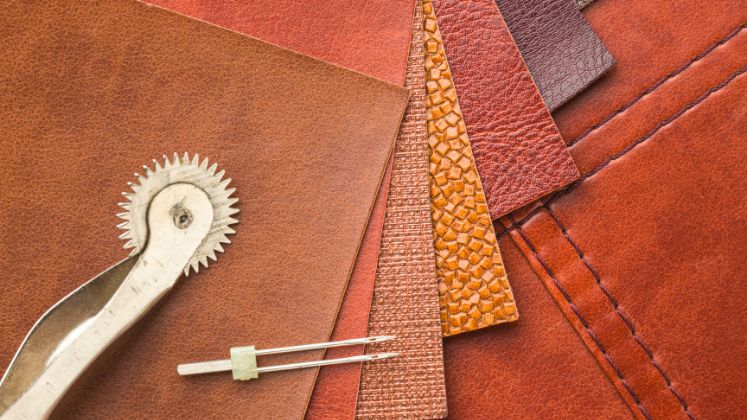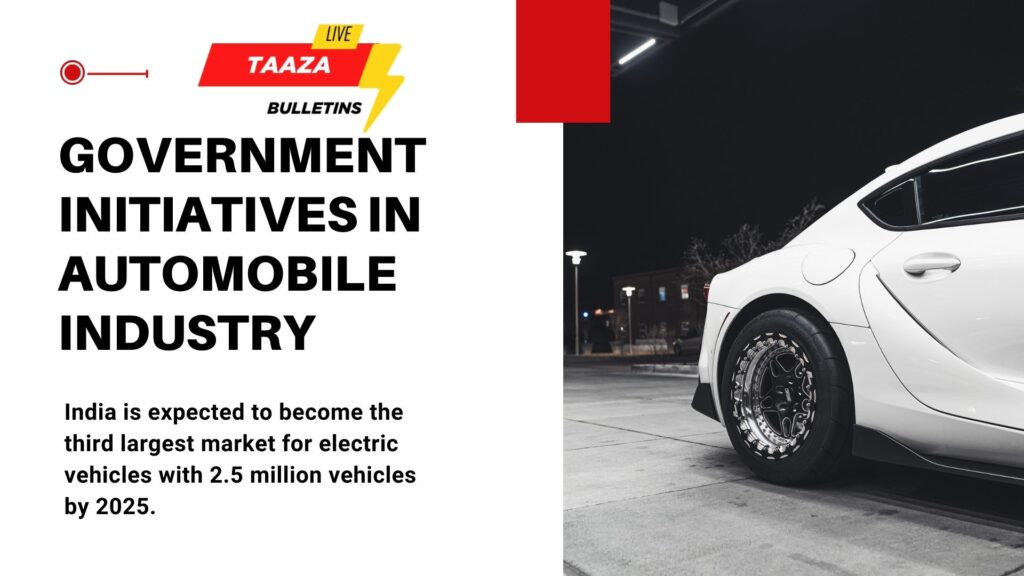According to Vantage Market Research, the global vegan leather market was valued at US $ 60.4 million in 2023 and is projected to reach US $ 131.7 million by 2030.
Table of Contents
The fashion industry, especially the leather sector, has come under scrutiny due to its environmental repercussions. The traditional process of leather production involves the procurement of animal hides, which necessitates intensive farming practices, the use of harmful chemicals in tanning, and significant ecological degradation.

In response to these concerns, a surge of innovation is taking place, with manufacturers of biomaterials and various brands dedicated to developing environmentally friendly alternatives to leather.
Prominent biomaterials manufacturers such as Malai Eco, Banofi, BioLeather, Fleather by Team PHOOL, Zaibunco Industries Pvt. Ltd., Responsive Industries Ltd., Giriraj Coated Fab Pvt. Ltd., and Response Fabrics India Pvt. Ltd. are at the forefront of this movement.
Simultaneously, brands including Planet Paadukas, The Gusto, Zouk, Tiger Marron, Mokobara, Aulive, Sarjaa, A Big Indian Story, Broke Mate, Paio, Arture, Moon Rabbit, The Cai Store, The House of Ganges, and Achilles’ Heels are adopting these sustainable materials to provide consumers with vegan and ethically produced fashion options.
Established companies like Allen Solly have also begun offering products crafted from innovative materials such as apple peels and cactus leaves.
On a global scale, leading brands such as Stella McCartney, Gucci, Hermes, Adidas, Lululemon, Tommy Hilfiger, and Balenciaga are exploring and transitioning to leather alternatives. Hugo Boss has introduced a line of shoes made from plant-based pineapple leather, while the fast-fashion retailer H&M has launched its Conscious Exclusive collection featuring vine leather.
Additionally, Hermes and Lululemon have partnered with the biomaterials company MycoWorks, renowned for its sustainable textiles and fibers. Hermes has utilized Fine Mycelium, a mushroom-derived leather, for its classic Victorian bags, while Lululemon has incorporated alternative leathers into its sustainable collection of bags and yoga mats. Adidas is also employing mycelium in some of its sustainable footwear offerings, and brands within the Kering group have begun to favor pure leather substitutes.
Vegan Leather Market Booms as Sustainability Takes the Lead
According to Vantage Market Research, the global market for vegan leather was valued at approximately US $60.4 million in 2023 and is anticipated to grow to US $131.7 million by 2030. A report from McKinsey & Company indicates that products featuring environmental, social, and governance-related claims experience a sales growth of 1.7 percentage points compared to those that do not. Notably, Millennials and Generation Z exhibit a strong willingness to pay a premium for eco-friendly products. Zuzana Gombosova, Co-founder of Malai Eco, which produces Malai—a biocomposite material derived from organic and sustainable bacterial cellulose—stated that the vegan leather market is expected to expand annually due to the increasing demand for environmentally friendly materials across various industries. This cellulose is cultivated using agricultural waste from the coconut industry in Southern India. By partnering with local farmers and processing facilities, the company utilizes coconut water that would otherwise be wasted and detrimental to the soil. This water is repurposed to support the bacteria’s cellulose production, with a single small coconut-processing unit capable of supplying 4,000 liters of water daily, sufficient to yield 320 square meters of Malai, which aligns with its projected annual production capacity. Zuzana noted that Malai can be utilized similarly to animal leather, as it can be sewn by hand or machine, cut, embossed, glued, and skived. The material is lightweight, hygroscopic, and possesses good shape memory. Currently, Malai is undergoing research and development to enhance its tensile strength, abrasion resistance, and elongation. It has been successfully tested for use in light footwear, sandals, slippers, and accessories such as bags, wallets, and pouches. The biomaterial is presently supplied to over 20 domestic and international brands.
A biomaterials enterprise, Banofi, has innovatively repurposed banana waste. As the leading global producer of bananas, India generates four tonnes of waste for every tonne of fruit, with a significant portion being discarded. Our process initiates by procuring banana crop waste directly from farmers, who would typically dispose of it. From this waste, we extract fibers, which constitute our main raw material. These fibers are then blended with natural gums and adhesives, followed by the application of various colors and coatings. The resulting material is applied to a fabric backing, yielding a durable and resilient product that is composed of 80 to 90 percent bio-based content. Our unique product, Ban-o-Fi (Banana Fibre Leather), boasts a considerably lower environmental footprint compared to both animal and synthetic leather, as stated by Jinali Mody, Founder and CEO of Banofi.
The company manufactures over 3,000 sheets of vegan leather annually, with each sheet measuring 39 inches by 27 inches. Jinali highlighted that the production of a single leather bag requires approximately 10,000 liters of water, and 90 percent of animal leather tanning processes utilize carcinogenic substances such as chromium.
What is Vegan Leather?
Animal leather is primarily sourced from the hides of cows, although it can also be obtained from pigs, sheep, snakes, horses, and various other animals. In contrast, vegan leather, also known as faux leather, replicates the appearance and texture of genuine leather through the use of synthetic materials or plant-based fibers, such as those derived from pineapple leaves, cactus, cork, and apple peels. Nonetheless, a significant portion of vegan leather is produced from polyvinyl chloride (PVC) and polyurethane (PU), both of which are plastics derived from petroleum. As long as the material does not originate from animal products, it qualifies as vegan.
The fashion industry has witnessed an increase in alternative leather materials, ranging from fish skin to pineapple leaves and cork leather. Renowned fashion houses such as John Galliano, Prada, and Christian Dior have explored the use of fish skin in their collections, a practice that has historical roots in various Indigenous cultures worldwide. Meanwhile, brands like Nanushka and Hugo Boss have focused on entirely vegan leather alternatives. The goal of sustainable fashion is to minimize pollution and waste during production while tackling issues of overproduction and reducing carbon dioxide emissions. Sustainability is a multifaceted concept, and faux leather represents just one aspect of the broader sustainable fashion movement. While companies like Allbirds and Sojo have been open about their environmental impacts, others have engaged in greenwashing, misleading consumers by marketing their products as eco-friendly without making substantial improvements to their practices.
Faux Versus Real Leather
If you have chosen to adopt a vegan lifestyle or are exploring more environmentally friendly alternatives, faux leather presents a viable substitute for conventional animal hides. The production of genuine leather involves a complex and lengthy process, during which animal skin is extensively salted, treated with calcium oxide, tanned, and subsequently subjected to the liquoring method, where fats and oils are incorporated to enhance its softness and durability. Those familiar with authentic leather will recognize its distinctive earthy aroma, a result of the tanning process, as well as its breathable characteristics when worn for extended periods. The predominant tanning methods include chromium and vegetable tanning. Chromium tanning employs chemicals to preserve the animal skin, providing enhanced water and heat resistance for the resulting leather products. However, this method generates chromium waste, which can contaminate nearby water sources. In contrast, vegetable tanning utilizes natural materials, such as tree bark, thereby avoiding harmful chemicals, although this method typically results in higher costs. With proper maintenance, genuine leather can endure for several decades in either case.
In recent years, vegan leather has made significant advancements, closely mimicking the texture and feel of authentic leather. The previously obvious plastic-like imitations have transformed into softer and more luxurious alternatives. However, vegan leather products generally have a lifespan ranging from two to five years. Despite this limitation, leather-like products provide a more sustainable option, particularly for individuals concerned about their environmental impact. Traditional leather production relies heavily on livestock, such as cattle, and the industrial farming of animals contributes to deforestation and greenhouse gas emissions. By eliminating cattle as a source of leather, faux leather appears to offer a more sustainable and cruelty-free choice. Nevertheless, this situation presents certain complexities.
The shorter lifespan of vegan leather compared to genuine leather necessitates a more frequent consumption cycle.




